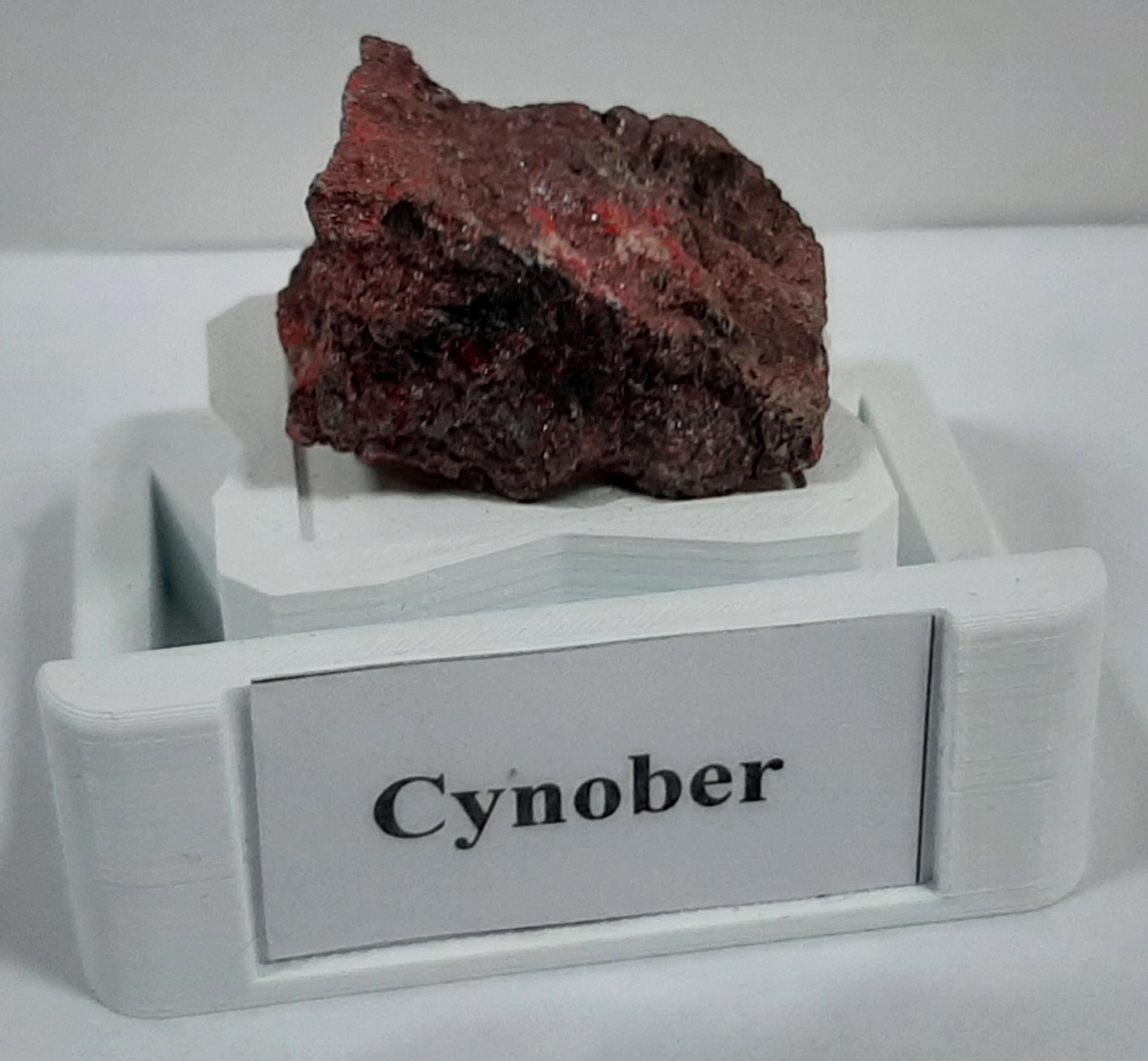
Cinnabar
sulphides
8.1 g/cm3
trigonal
clear, perfect
HgS
it is usually red in colour with its various variations, but it can also be grey, black or brown
2 to 2.5 on the Mohs scale
metallic
Cinnabar is a component of low-temperature hydrothermal formations; occurs in the form of veins; it is found in geysers and hot springs, sometimes formed in sedimentary formations; it is abundant all over the Earth, its largest deposits are in Spain, but it is also found in countries such as the USA, China, Russia, Slovenia, and Germany; in Poland, small amounts were found in Lower Silesia: Kletno, around Stronie, in Boguszów, around Szklarska Poręba, in the Pieniny Mountains and the Bieszczady Mountains
Cinnabar is a relatively rare mineral from the sulfide group; forms tabular crystals, less often columnar crystals, sometimes taking the form of rhombohedra; in granular aggregates and deposits, rarely in the form of thick-tablet crystals; frequent twinning, its crystals tend to occur on other minerals; characterized by metallic shine, clear, excellent cleavage and uneven fracture; it is used as the main material from which mercury is obtained in the world, it is used to produce paints, its red varieties are valued by collectors, jewellery is made from it to a small extent, it is also used in measurement and regulation technology
The name cinnabar comes from the Persian word zinijfrach meaning "resin" or "dragon's blood" and refers to the red colour of the mineral; it was mined as early as 800 BC and used to dye things red in Italy, Greece, Spain, Japan, China, Turkey and the Mayan countries of South America; the name cinnabar, which is a variety of red colour, comes from this mineral; powdered cinnabar has been used as a cosmetic in many parts of the world for thousands of years; cinnabar was eventually discovered to be toxic and its use in pigments, paints and cosmetics began to decline; in the past, it was also used to poison people due to the fact that it can release harmful mercury; as a mercury mineral ore, it is a hazardous material; it should be treated as a toxic substance; it should be stored with a label warning unwitting people who may come across it in a sample cabinet, display case, or storage area


